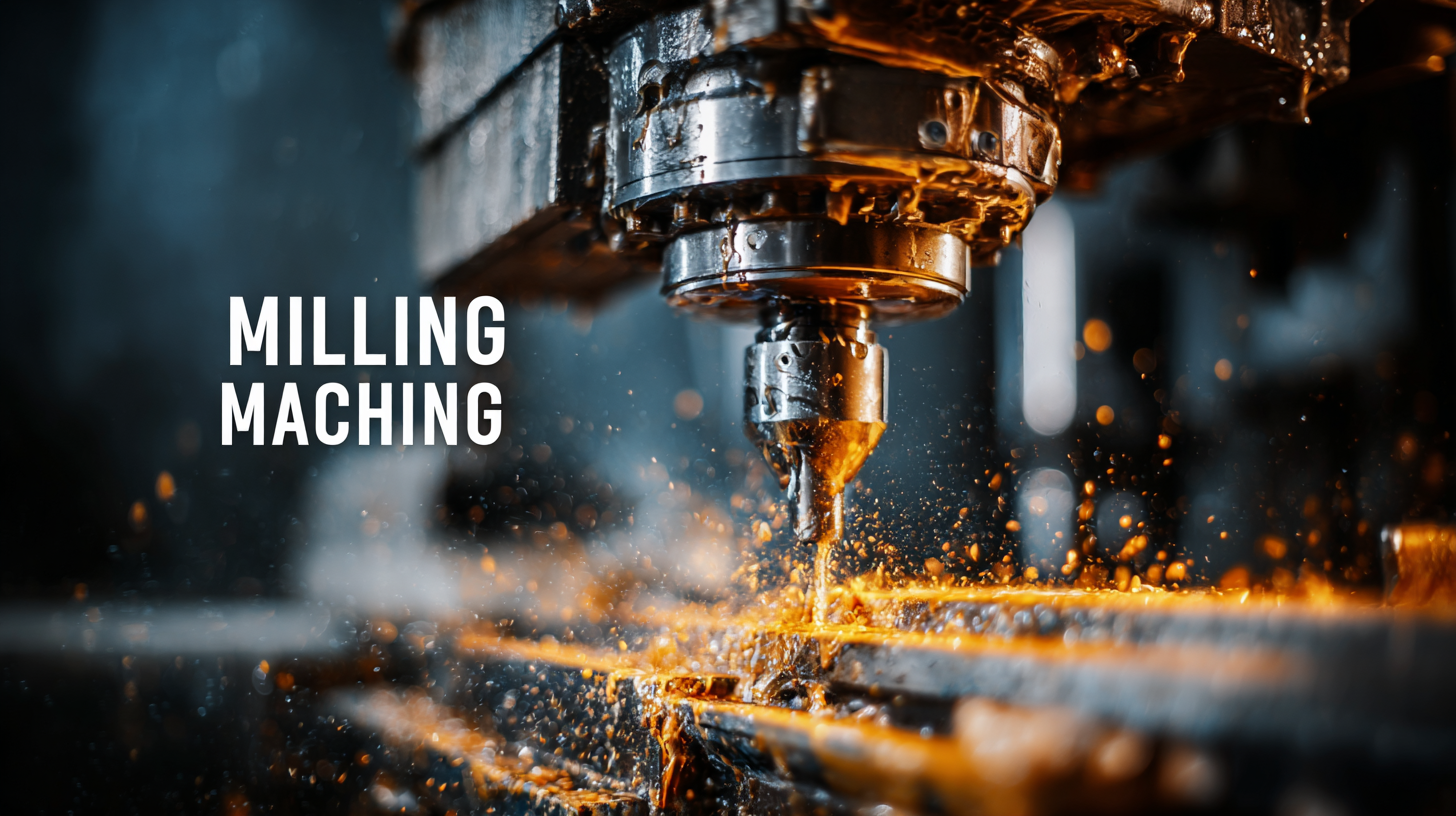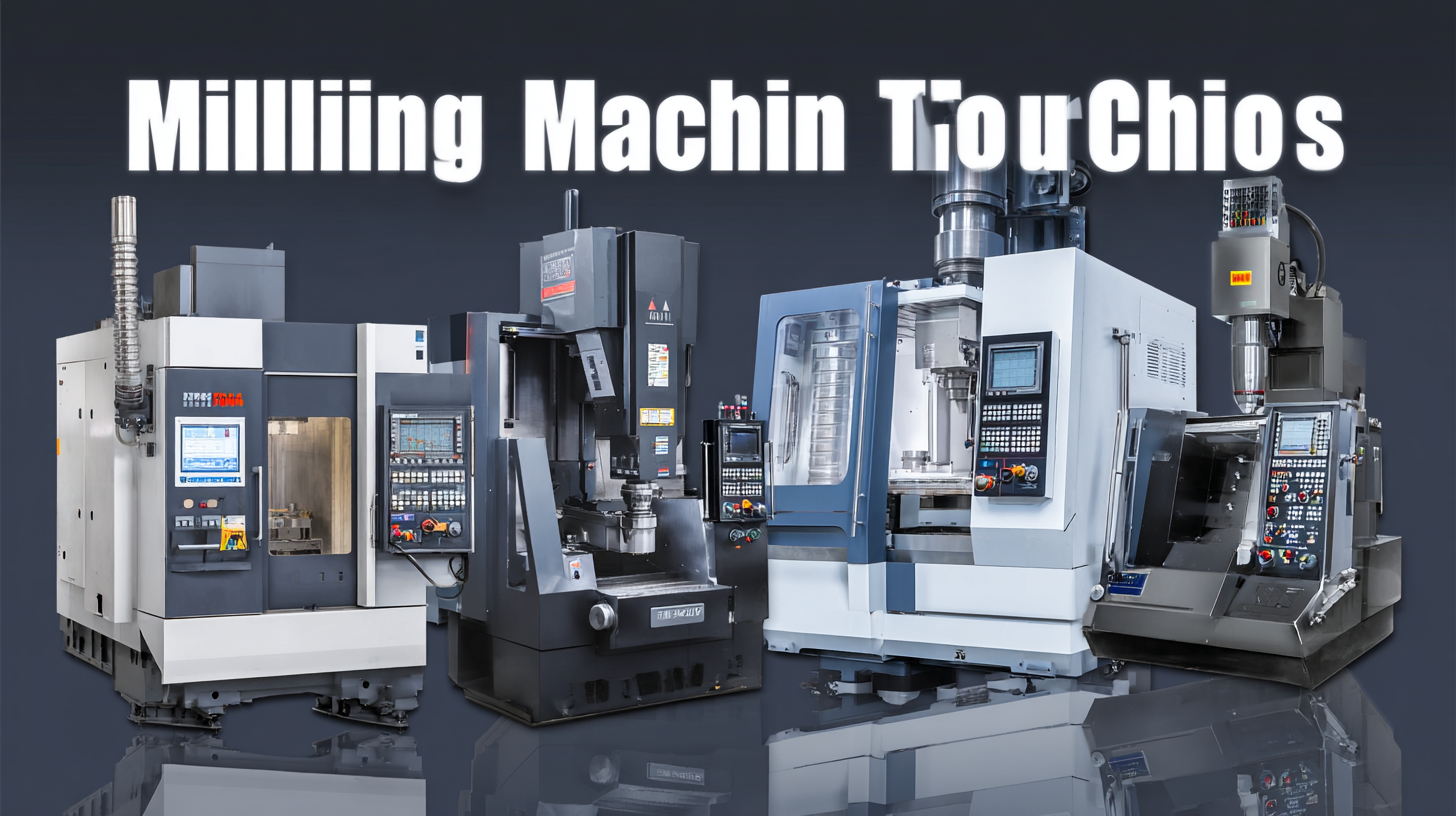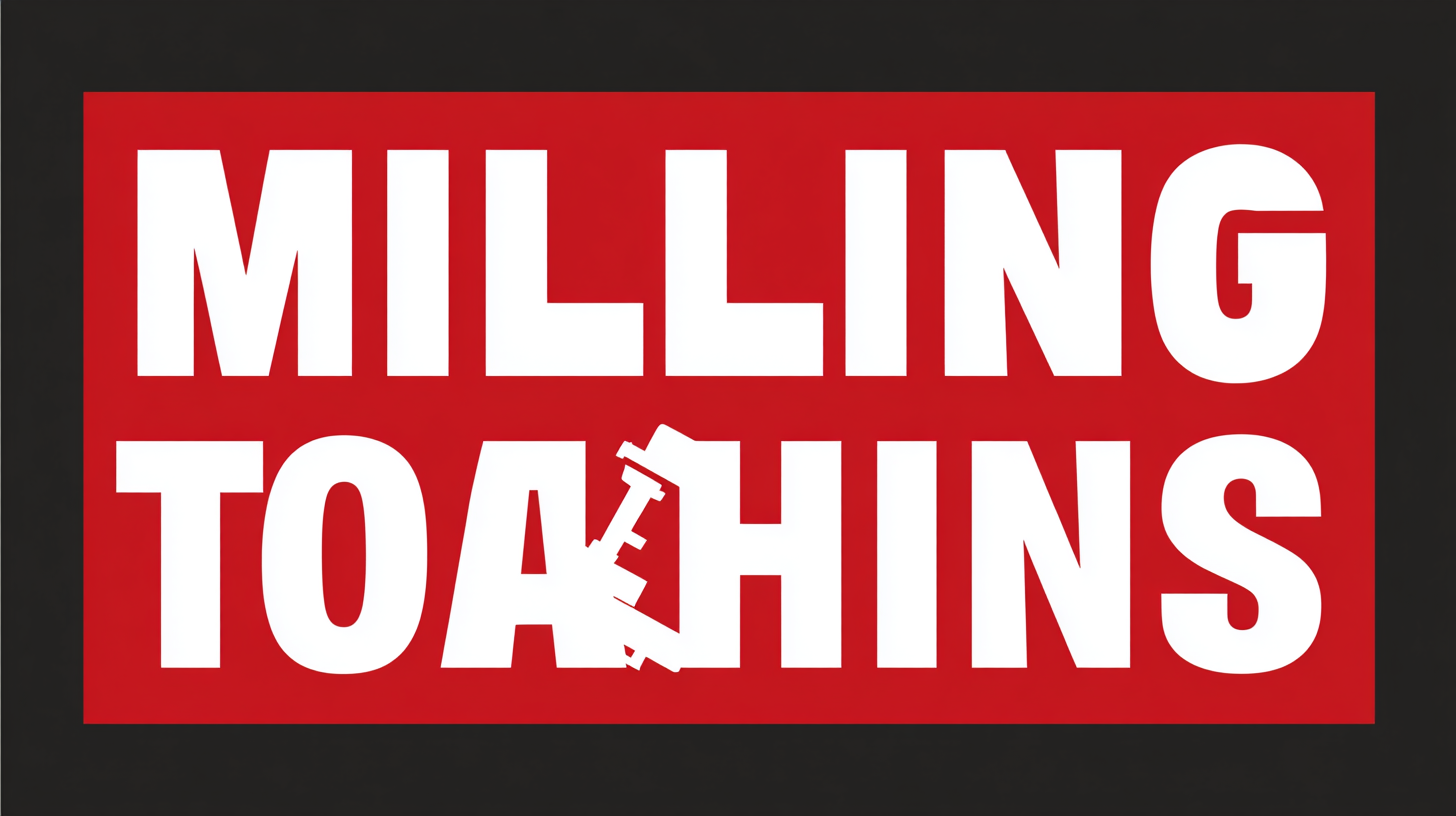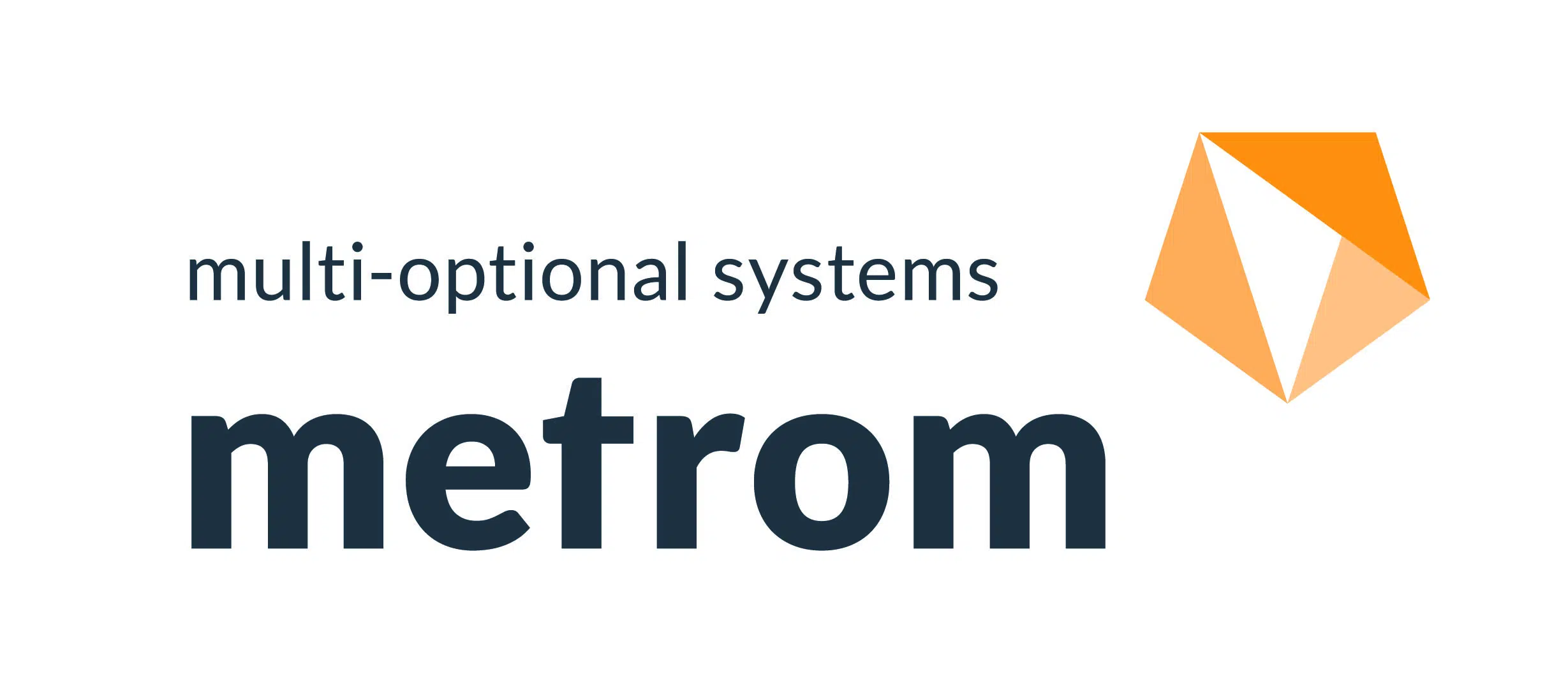METROM’s
Blog
METROM’s
Blog
Strategies for Sourcing the Best Milling Machine Tools in the Market Analysis of 2025
As the global manufacturing landscape continues to evolve, the demand for high-quality milling machine tools has surged, with the market projected to reach USD 10 billion by 2025, according to industry reports. This growth is primarily driven by the increasing need for precision engineering across various sectors, including aerospace, automotive, and electronics. China, recognized as a powerhouse in manufacturing, plays a pivotal role in this market as both a leading producer and exporter of milling machine tools.

With an expected annual growth rate of 7.5%, leveraging advanced technologies and innovative sourcing strategies is essential for businesses aiming to remain competitive. This blog will delve into effective strategies for sourcing the best milling machine tools, highlighting trends, supplier insights, and key considerations that can significantly enhance operational efficiency and product quality in this dynamic market environment.
Understanding the Essential Features of Milling Machine Tools in 2025
In 2025, the landscape of milling machine tools is set to evolve dramatically, driven by
technological advancements and changing industry demands. Understanding the
essential features of these tools is crucial for
manufacturers looking to stay competitive. One of the standout characteristics will be the integration of
smart technology, allowing for real-time monitoring and adjustments during
the milling process. This feature not only enhances precision but also improves efficiency,
greatly reducing downtime and waste.
 Moreover, advancements in material science will play a significant role in the design of milling machine tools.
In 2025, we can expect to see an increased use of
lightweight yet durable materials, which will contribute to the tools'
overall performance and longevity. Additionally, ergonomic designs
will be prioritized, ensuring that operators can work comfortably and safely, which is essential for maximizing
productivity. As industries continue to prioritize sustainability, eco-friendly
features such as energy-efficient operations and recyclable components will be key selling points
for milling machine tools.
Moreover, advancements in material science will play a significant role in the design of milling machine tools.
In 2025, we can expect to see an increased use of
lightweight yet durable materials, which will contribute to the tools'
overall performance and longevity. Additionally, ergonomic designs
will be prioritized, ensuring that operators can work comfortably and safely, which is essential for maximizing
productivity. As industries continue to prioritize sustainability, eco-friendly
features such as energy-efficient operations and recyclable components will be key selling points
for milling machine tools.
Comparative Analysis of Different Types of Milling Machines and Their Applications
The milling machine market is anticipated to reach a valuation of $30 billion by 2025, driven by advancements in technology and the increasing demand for precision engineering. Different types of milling machines serve distinct applications, making it essential to understand their functionalities. For instance, vertical milling machines are ideal for operations requiring precision and can handle a range of materials, while horizontal machines offer superior cutting capabilities for larger workpieces. According to recent reports, CNC milling machines are gaining popularity due to their automation and accuracy, significantly enhancing productivity in various industries.
**Tip:** When selecting a milling machine, consider the specific material and operational requirements for your projects. Understanding the nuances between types, such as universal vs. specialized machines, can greatly affect your machining efficiency and output quality.
In addition to the type of milling machine, it's crucial to assess the machinery's specifications such as spindle speed and tooling compatibility. Recent data indicates that machines with higher RPM capabilities can reduce machining time by up to 30%, providing a substantial competitive edge. Ensuring you have the right tooling can also enhance performance, as the right cutter not only influences the finish but also extends the life of the machine.
**Tip:** Regularly consult industry reports and customer reviews to stay updated on the latest milling technologies and best practices, ensuring your investment leads to optimal operational performance.
Strategies for Sourcing the Best Milling Machine Tools in the Market Analysis of 2025
| Type of Milling Machine | Applications | Advantages | Market Demand (2025 Est.) | Price Range (USD) |
|---|---|---|---|---|
| Vertical Milling Machine | Machining parts, prototyping | Versatile, easy to use | High | $3,000 - $20,000 |
| Horizontal Milling Machine | Heavy-duty machining | Higher stability, larger workpieces | Medium | $5,000 - $25,000 |
| CNC Milling Machine | Complex parts, high precision | Automated, high accuracy | Very High | $10,000 - $100,000 |
| Benchtop Milling Machine | Small-scale machining, hobbies | Compact, affordable | Increasing | $1,000 - $5,000 |
| Drill Mill Machine | Drilling and milling in one | Space-saving | Low | $2,000 - $8,000 |
Key Strategies for Evaluating and Selecting High-Quality Milling Tools
When it comes to sourcing high-quality milling machine tools, understanding the key evaluation strategies is essential for making informed purchasing decisions.
One of the foremost strategies involves assessing material quality. Milling tools are often subjected to significant wear and tear, so selecting tools made from durable materials, such as carbide or high-speed steel, ensures longevity and better performance. Additionally, examining the coating applied to the cutting tools can significantly affect their efficiency and resistance to corrosion, further extending their lifespan.
Another crucial aspect to consider is the manufacturer’s reputation and certification. Established brands typically have a track record of producing reliable tools that meet industry standards. It’s advisable to seek out tools that come with ISO certification, as this indicates a commitment to quality and consistency in production. Furthermore, engaging with the milling community through forums and reviews can provide insights into the real-world performance of different tools, helping you gauge their effectiveness in various applications.
By employing these strategies, you can not only find the best milling tools available in the market but also ensure that they meet your specific operational needs.
How to Identify the Best Suppliers for Milling Machine Tools in Today’s Market
In today’s competitive landscape, identifying the best suppliers for milling machine tools is crucial for optimizing manufacturing processes. According to a recent report by MarketsandMarkets, the global milling machine market is projected to reach $100 billion by 2025, driven by advancements in automation and increasing demand for precision machinery. This growth underscores the importance of sourcing high-quality tools from reliable suppliers who can meet evolving technological requirements.
When evaluating potential suppliers, companies should consider factors such as technological capabilities, product range, and after-sales support. A study by ResearchAndMarkets highlights that manufacturers prioritizing suppliers with a strong commitment to innovation are likely to achieve better productivity and efficiency. Furthermore, suppliers that offer comprehensive training and support services can significantly reduce downtime, ensuring that businesses continue to operate smoothly and profitably. By leveraging these strategies, manufacturers can position themselves to capitalize on the burgeoning market for milling machine tools well into 2025 and beyond.
Market Analysis of Milling Machine Tools - 2025
This chart illustrates the projected market share percentage of various types of milling machine tools in 2025. It provides insights into which tools are expected to dominate the market based on current trends and demands.
Future Trends in Milling Machine Tools and Their Impact on Sourcing Decisions
As we look towards the future of milling machine tools, industry experts are honing in on critical trends that will significantly influence sourcing decisions in 2025. One striking trend is the implementation of multi-criteria decision-making (MCDM) methods which are becoming increasingly important in the selection of machinery. These recent developments highlight the growing complexity of manufacturing environments, where factors such as efficiency, cost-effectiveness, and sustainability must be weighed together. With over 70% of manufacturers emphasizing targeted investments in their digital systems, the push for intelligent tools that integrate seamlessly with Industry 4.0 practices is evident.
Additionally, sustainability has emerged as a crucial consideration in the sourcing of milling machine tools. The push towards greener production processes is reshaping supply chains and driving innovations in machine design. The ongoing challenges posed by disruptions in the global supply chain further necessitate a focus on resilience and efficiency in sourcing decisions. Reports indicate that organizations prioritizing sustainability are not only meeting regulatory pressures but are also experiencing enhanced performance and customer satisfaction. This dual focus on technological innovation and environmental responsibility will shape the competitive landscape for milling machine tools in the near future.


